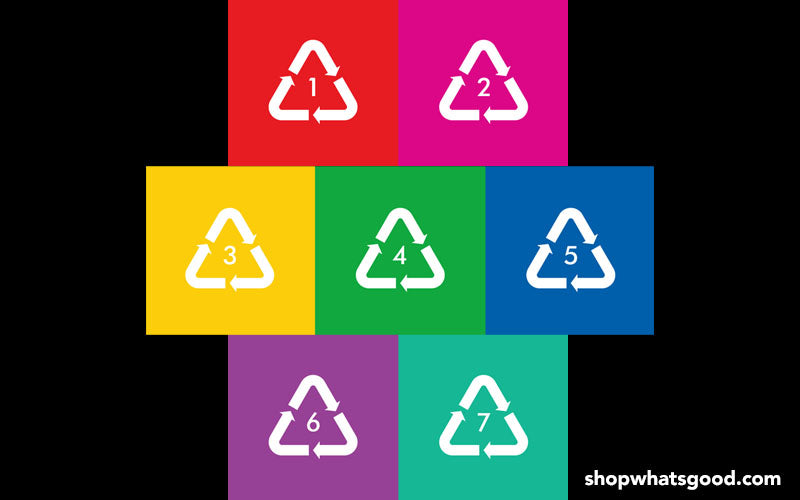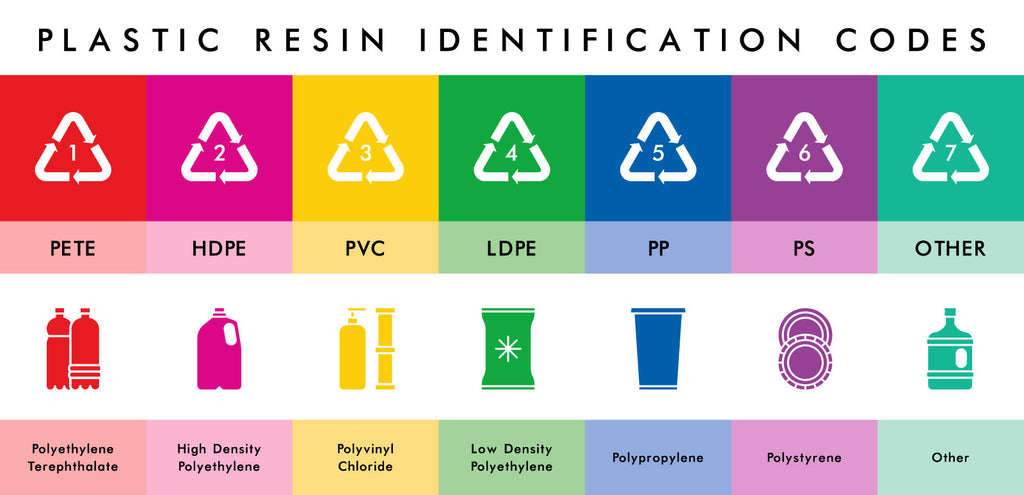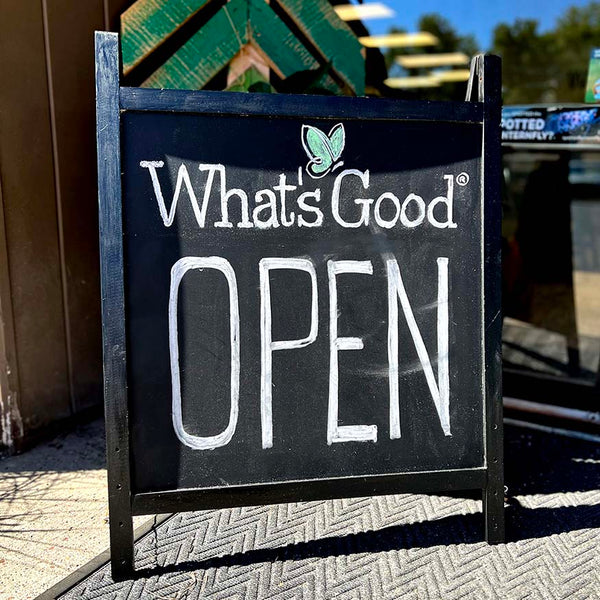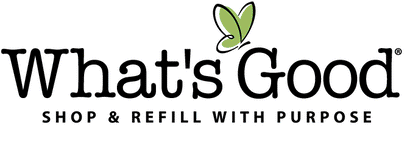FREE 🇺🇸 GROUND SHIPPING Orders 75+
FREE 🇺🇸 GROUND SHIPPING Orders 75+
Add description, images, menus and links to your mega menu
A column with no settings can be used as a spacer
Link to your collections, sales and even external links
Add up to five columns
Add description, images, menus and links to your mega menu
A column with no settings can be used as a spacer
Link to your collections, sales and even external links
Add up to five columns
Plastic & Recycling
September 09, 2022

Properly recycling plastics can be a complicated process and is often misunderstood. Many people incorrectly believe that any plastic product with the recycling symbol on it means that it can be recycled. It's a common misconception. In actuality, a number (1-7) displayed inside the ♻️ symbol signifies a product’s Plastic Resin Identification (PRI) Code… which indicates the plastic's chemical make-up… which determines whether it can actually be recycled or not.
@Brightmark — a waste management company focused on building eco-conscious, sustainable waste solutions — recently published a super insightful & easy-to-understand guide explaining what those recycling symbols all mean. We really love it! You can download Brightmark's Recycle Right Recycling Guide here.
They sum up the codes like this:
#1 and #2: these store your liquids
#3 and #4: these are your common daily use plastics
#5 and #6: these keep things fresh
#7: these are everything else

#1 - Polyethylene Terephthalate (PET or PETE)
Examples include water bottles, soft drinks, mouthwash, salad dressing bottles, peanut butter containers, oil containers, and some ropes. Plastic #1 is usually clear in color, and it is not intended for multiple uses.
Recyclable?
Yes, commonly recycled.
#2 - High-density Polyethylene (HDPE)
Examples include milk and juice jugs, detergent and household cleaners, cosmetics, bleach containers, toys, crates, buckets and playground equipment.
Plastic #2 is durable enough to be reused without any harm.
Recyclable?
Yes, commonly recycled.
#3 - Polyvinyl Chloride (PVC)
Examples include piping, some shampoo and cooking oil bottles, bubble wrap, house siding, shower curtains, credit cards. Plastic #3 contains chemical additives that can be harmful and should never be burned.
Recyclable?
No, not commonly recycled.
#4 - Low-density Polyethylene (LDPE)
Examples include bread bags, frozen foods, plastic grocery bags, toothpaste, hot and cold beverage cups, sandwich bags. Plastic #4 while not commonly recycled, many retailers have now started accepting it.
Recyclable?
No, not commonly recycled.
#5 - Polypropylene (PP)
Examples include yogurt and cottage cheese containers, ketchup and syrup bottles, medicine bottles, straws, disposable diapers, and potato chip bags. Plastic #5 is often used for food; if your community recycles this type of plastic, make sure it is rinsed.
Recyclable?
No, not commonly recycled.
#6 - Polystyrene (PS)
Examples include styrofoam take-out containers, egg cartons, plastic utensils, foam packing peanuts, CD cases, seed trays, and fast-food trays. Plastic #6 is easily breakable, and the proper care should be taken when throwing it away.
Recyclable?
No, not commonly recycled.
#7 - Miscellaneous Plastics
Examples include sunglasses, eyeglasses, CDs and DVDs, computer cases, 5-gallon water jugs, bulletproof materials, sippy cups, dental sealants, and nylon. Plastic #7 is made up of a wide variety of plastic resins that don’t fit into the previous categories.
Recyclable?
No, not commonly recycled.
A key takeaway:
What can and can’t be recycled depends entirely on where you live and what kind of Material Recovery Facilities your county or state provides for its residents. Some counties accept plastics based on these PRI codes. Alternately, What’s Good® is based in Monroe County in New York State — a county that does not accept plastics by their PRI codes but rather by their shape: bottles, jugs, jars, and tubs.
Find out what plastics your own county accepts for recycling. And, encourage your state and local government to bring more facilities to your town that bolster recycling efforts and support circularity.
You can also do so much good through the choices you make as a consumer. Look for eyeglasses made from acetate. Shop bulk food and produce and/or farm markets to reduce reliance on single-use containers. Be picky not just about what’s in your food/products, and sprayed on your food/products, but also what it’s packaged in. We follow some innovative businesses trying to expand the use of organic materials as plastic alternatives in packaging, including mushrooms (mycelium) and seaweed. Another blog post for another day :)
For additional recycling help, visit earth911.com — one of North America's most extensive recycling databases of recycling solutions.
Source: Brightmark, brightmark.com
“Different plastic types,” July 14, 2021
“Learn how to recycle right,” April 11, 2022
Leave a comment

Good News
If any email is worthy of your inbox, it's this. Our goal is 1–2x per month. You'll get helpful & inspiring eco info, plus subscriber-only discounts.
Welcome to What's Good
Here's your $10 coupon
COPY THIS CODE TO USE IN CHECKOUT
